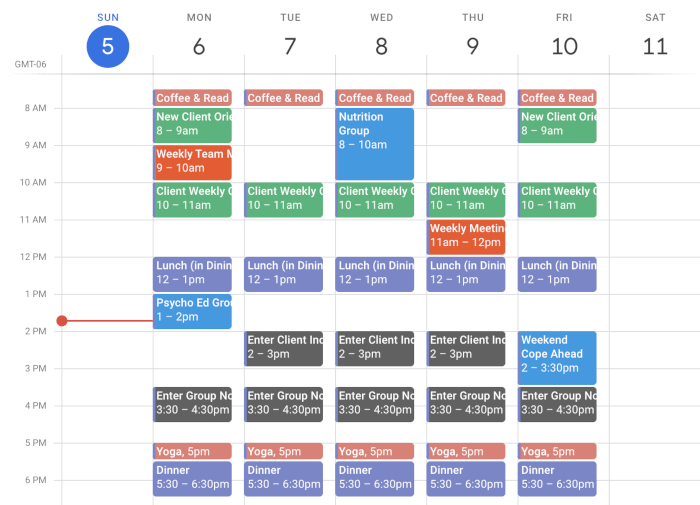Every day, the average person makes approximately 35,000 decisions. From choosing what to wear in the morning to deciding which route to take to work, our brains are constantly processing choices. While most of these decisions seem trivial, they collectively drain our mental resources, leading to decreased productivity and poor judgment later in the day. This phenomenon isn’t just tiredness – it’s a scientifically-backed condition called decision fatigue.
The good news? Understanding how decision fatigue solution strategies work can transform your daily effectiveness. By implementing proven techniques to reduce unnecessary choices and optimize your decision-making process, you can preserve mental energy for what truly matters. This comprehensive guide explores actionable methods to beat decision fatigue, backed by psychological research and real-world applications that successful individuals use to maintain peak performance throughout their day.
What is Decision Fatigue and Why It’s Sabotaging Your Success
Decision fatigue refers to the deteriorating quality of decisions made after a long session of decision-making. Unlike physical fatigue, this mental exhaustion isn’t immediately obvious, making it particularly dangerous for productivity and success. Research from Columbia University demonstrates that our brains treat decision-making like a muscle – the more we use it, the weaker it becomes throughout the day.
The impact extends far beyond simple choices. Studies show that judges are more likely to grant parole in the morning than in the afternoon, with approval rates dropping from 65% at 9 AM to nearly zero before lunch. This dramatic shift illustrates how decision fatigue affects even trained professionals making life-changing determinations.
For professionals and entrepreneurs, decision fatigue creates a cascading effect. Early morning energy gets wasted on trivial choices, leaving little mental bandwidth for strategic thinking, creative problem-solving, or important negotiations. The result? Delayed projects, missed opportunities, and a constant feeling of being overwhelmed despite working harder than ever.
Understanding this concept is the first step toward preventing burnout and maintaining productivity. When you recognize that willpower and decision-making share the same mental resources, you can begin structuring your day to protect these valuable cognitive assets.
The Hidden Science Behind Mental Depletion and Choice Overload
Neuroscientific research reveals that decision-making activates the prefrontal cortex, the brain region responsible for executive functions. This area consumes approximately 20% of our body’s energy, making it particularly susceptible to depletion. When overworked, the prefrontal cortex literally runs out of fuel, forcing our brains to rely on mental shortcuts that often lead to poor choices.
The glucose connection plays a crucial role in this process. Studies published in the Journal of Personality and Social Psychology found that decision-making depletes glucose levels in the brain. Participants who made difficult choices showed measurably lower glucose concentrations, directly correlating with decreased self-control and decision quality. This explains why we crave sugary snacks during intense work sessions and why important decisions feel impossible when we’re mentally drained.
Choice overload compounds this problem exponentially. Psychologist Barry Schwartz’s research demonstrates that having too many options paradoxically leads to decision paralysis and decreased satisfaction. When faced with numerous alternatives, our brains expend extra energy evaluating each possibility, accelerating mental fatigue. This phenomenon explains why successful companies like Apple deliberately limit product options despite having the resources to create endless variations.
Modern technology amplifies these challenges. The average smartphone user receives 80 push notifications daily, each requiring a micro-decision about attention allocation. These constant interruptions create a state of chronic decision fatigue, making sustained focus increasingly difficult throughout the day.
How to Identify Decision Fatigue Symptoms in Your Daily Life
Recognizing decision fatigue symptoms is essential for implementing effective solutions. Unlike obvious signs of physical exhaustion, mental depletion manifests subtly, often masquerading as laziness or lack of motivation. The key indicators include procrastination on important tasks, especially those requiring careful consideration or creativity.
Common symptoms include:
- Avoidance behaviors: Postponing decisions or delegating them unnecessarily
- Impulsive choices: Making quick decisions to avoid mental effort, often with poor outcomes
- Analysis paralysis: Spending excessive time on minor decisions while avoiding major ones
- Emotional volatility: Increased irritability or anxiety when facing choices
- Default selections: Always choosing the easiest or most familiar option
Physical manifestations often accompany mental symptoms. Many people experience afternoon energy crashes, increased cravings for unhealthy foods, or difficulty maintaining focus on complex tasks. These signs indicate that your brain’s glucose levels have dropped due to excessive decision-making demands.
Timing patterns reveal important clues about your personal decision fatigue cycle. Track when you feel most confident making important choices versus when simple decisions feel overwhelming. Most people experience peak decision-making capacity within two hours of waking, with steady decline throughout the day unless specifically managed.
Professional impact becomes evident through decreased work quality, missed deadlines, or reluctance to tackle challenging projects. If you find yourself dreading meetings that require input or avoiding strategic planning sessions, decision fatigue may be undermining your career progression and overall mental clarity.
Proven Decision Fatigue Solutions That Actually Work
Implementing effective decision fatigue solution strategies requires a systematic approach targeting the root causes of mental depletion. The most successful interventions focus on reducing unnecessary decisions rather than simply making better choices. Research from Stanford University shows that decision reduction techniques can improve decision quality by up to 40% while significantly increasing overall productivity.
The “decision diet” approach involves systematically eliminating low-value choices from your daily routine. Start by identifying recurring decisions that consume mental energy without adding significant value. These might include what to wear, where to eat lunch, or which route to take to work. By standardizing these choices, you preserve cognitive resources for high-impact decisions.
Batch processing represents another powerful strategy. Instead of making similar decisions throughout the day, group them into dedicated time blocks. For example, review and respond to all emails twice daily rather than constantly checking messages. This approach reduces decision switching costs and maintains better focus on primary tasks.
The two-minute rule provides an effective framework for immediate choices. If a decision requires less than two minutes to make and implement, do it immediately. For more complex decisions, schedule specific time blocks when your mental energy is highest. This prevents minor choices from accumulating and overwhelming your cognitive capacity later.
Energy management becomes crucial for sustainable decision-making. Research indicates that brief breaks, light exercise, and proper nutrition can restore decision-making capacity even during demanding days. Strategic glucose replenishment through healthy snacks helps maintain optimal brain function during extended decision-making sessions.
Automate Your Way to Better Choices: The Power of Routines
Automation transforms recurring decisions into unconscious habits, dramatically reducing daily mental load. Successful entrepreneurs like Mark Zuckerberg and Barack Obama famously wear similar outfits daily, eliminating clothing decisions entirely. This seemingly simple strategy preserves mental energy for more important choices throughout their demanding schedules.
Digital automation tools can eliminate hundreds of micro-decisions weekly. Use Google Calendar to automatically schedule recurring meetings, set up budgeting apps to categorize expenses, and create email filters that sort messages without manual intervention. Each automated process reduces your decision burden while improving consistency.
Morning routines deserve special attention since early decisions significantly impact the entire day. Establish a fixed sequence of morning activities, from wake-up time to breakfast choices. This routine should require zero decisions, operating like a well-rehearsed script that transitions you smoothly into productive work mode.
Meal planning automation can eliminate dozens of daily food-related decisions. Prepare a weekly menu in advance, create standardized shopping lists, and batch-cook ingredients on weekends. Many successful professionals eat similar breakfasts and lunches daily, reserving variety for dinner when decision fatigue is already high.
Technology integration amplifies routine effectiveness. Use IFTTT or Zapier to create automated workflows that handle repetitive tasks. Set up smart home devices to adjust lighting and temperature automatically, reducing environmental decisions that subtly drain mental resources throughout the day.
Strategic Decision Timing: When Your Brain Makes the Best Choices
Chronobiology research reveals that decision-making capacity fluctuates predictably throughout the day. Most people experience peak cognitive performance within the first two hours after waking, when cortisol levels are naturally highest and glucose stores are replenished. This “golden hour” should be reserved for your most important decisions and complex problem-solving tasks.
The post-lunch decision dip affects nearly everyone, typically occurring between 1-3 PM. During this period, avoid making significant choices whenever possible. Instead, use this time for routine tasks, physical activity, or administrative work that requires minimal decision-making. Research shows that decisions made during this window are 23% more likely to be regretted later.
Strategic scheduling can optimize your entire decision-making calendar. Place important meetings, creative work, and strategic planning sessions during your peak hours. Save routine communications, data entry, and predetermined tasks for lower-energy periods. This approach aligns your decision demands with your natural cognitive rhythms.
Weekly patterns also influence decision quality. Studies indicate that Tuesday through Thursday represent optimal decision-making days, while Monday morning and Friday afternoon show decreased cognitive performance. Schedule major decisions, negotiations, and strategic planning during mid-week when both you and others are likely to be operating at peak mental capacity.
Recovery periods between intense decision-making sessions prove essential for sustained performance. Build 10-15 minute breaks into your schedule after complex decisions or challenging meetings. Use this time for light physical activity, mindfulness techniques, or simple breathing exercises that help restore cognitive resources.
Essential Decision Fatigue Solutions for Workplace Productivity
Workplace decision fatigue affects entire organizations, creating ripple effects that impact team performance, project timelines, and overall business outcomes. Companies implementing systematic decision fatigue solution programs report 25% improvements in employee productivity and 30% reduction in project delays, according to Harvard Business Review research.
Meeting optimization represents a critical intervention point. The average professional spends 37% of their time in meetings, many requiring constant micro-decisions about participation, response timing, and attention allocation. Implement structured agendas with predetermined decision points, use Slack for routine communications, and establish “no-meeting” blocks for focused work.
Decision delegation frameworks can distribute cognitive load across teams more effectively. Create clear authority matrices defining who makes specific types of decisions. This eliminates the mental energy spent determining decision ownership while speeding up organizational responsiveness. Train team members to make autonomous decisions within defined parameters.
Technology integration in workplace decision-making can dramatically reduce mental overhead. Use project management tools like Asana or Trello to automate task assignments and deadline tracking. Implement customer relationship management systems that automatically prioritize leads and schedule follow-ups, removing these decisions from daily workflows.
Environmental design influences decision-making capacity throughout the workday. Open offices create constant micro-decisions about when to interact with colleagues, while excessive visual stimuli drain cognitive resources. Create designated quiet zones for focused work and standardize workspace layouts to minimize daily environmental decisions.
Team decision-making protocols should account for individual energy levels and cognitive cycles. Schedule brainstorming sessions during peak hours, use asynchronous decision-making tools for non-urgent choices, and establish clear escalation paths to prevent decision bottlenecks during high-fatigue periods.
Transform Your Environment to Reduce Choice Overload
Environmental design profoundly impacts decision-making demands, often in ways we don’t consciously recognize. Cluttered spaces require constant micro-decisions about where to focus attention, what items to move, and how to navigate obstacles. Research from UCLA found that people living in messy homes showed elevated cortisol levels throughout the day, indicating chronic stress from environmental decision demands.
Digital environment optimization can eliminate hundreds of daily micro-decisions. Organize computer desktops with clear folder structures, use bookmark folders to reduce browsing decisions, and implement email filters that automatically sort incoming messages. Clean up smartphone home screens, removing apps that trigger impulsive decision-making or attention switching.
Physical workspace design should minimize unnecessary choices while supporting focused work. Use consistent organizational systems, label storage areas clearly, and maintain clean surfaces that don’t compete for visual attention. Position essential items within easy reach to eliminate retrieval decisions during important tasks.
Choice architecture principles can guide environmental modifications. Place healthy snacks at eye level while storing less optimal options out of sight. Use visual cues like color coding to make good choices more obvious. Create default positions for commonly used items so replacement becomes automatic rather than requiring conscious decision-making.
Social environment considerations affect decision-making capacity through peer influence and social pressure. Surround yourself with people who support your decision-making goals and understand your energy management strategies. Communicate your peak decision-making hours to colleagues and family members, requesting that important discussions occur during these optimal periods.
Technology boundaries prevent digital decision fatigue from overwhelming your natural cognitive rhythms. Use focus modes or website blockers to limit distracting choices during work hours. Set specific times for social media checking rather than allowing constant decision-making about when to engage with these platforms.
Decision fatigue represents one of the most overlooked obstacles to personal and professional success. By understanding the science behind mental depletion and implementing systematic solutions, you can preserve cognitive resources for decisions that truly matter. The strategies outlined in this guide – from automation and routine development to environmental optimization and strategic timing – provide a comprehensive framework for overcoming choice overload.
Remember that implementing these decision fatigue solution techniques requires patience and consistent practice. Start with one or two strategies that resonate most with your current challenges, then gradually expand your approach as new habits take hold. The goal isn’t perfection but rather sustainable improvement in your decision-making capacity and overall productivity.
Take action today by identifying your three most draining daily decisions and developing automated alternatives. Whether it’s standardizing your morning routine, batch-processing emails, or redesigning your workspace, small changes compound into significant improvements over time. Your future self will thank you for the mental energy you preserve and the enhanced decision quality that follows.



